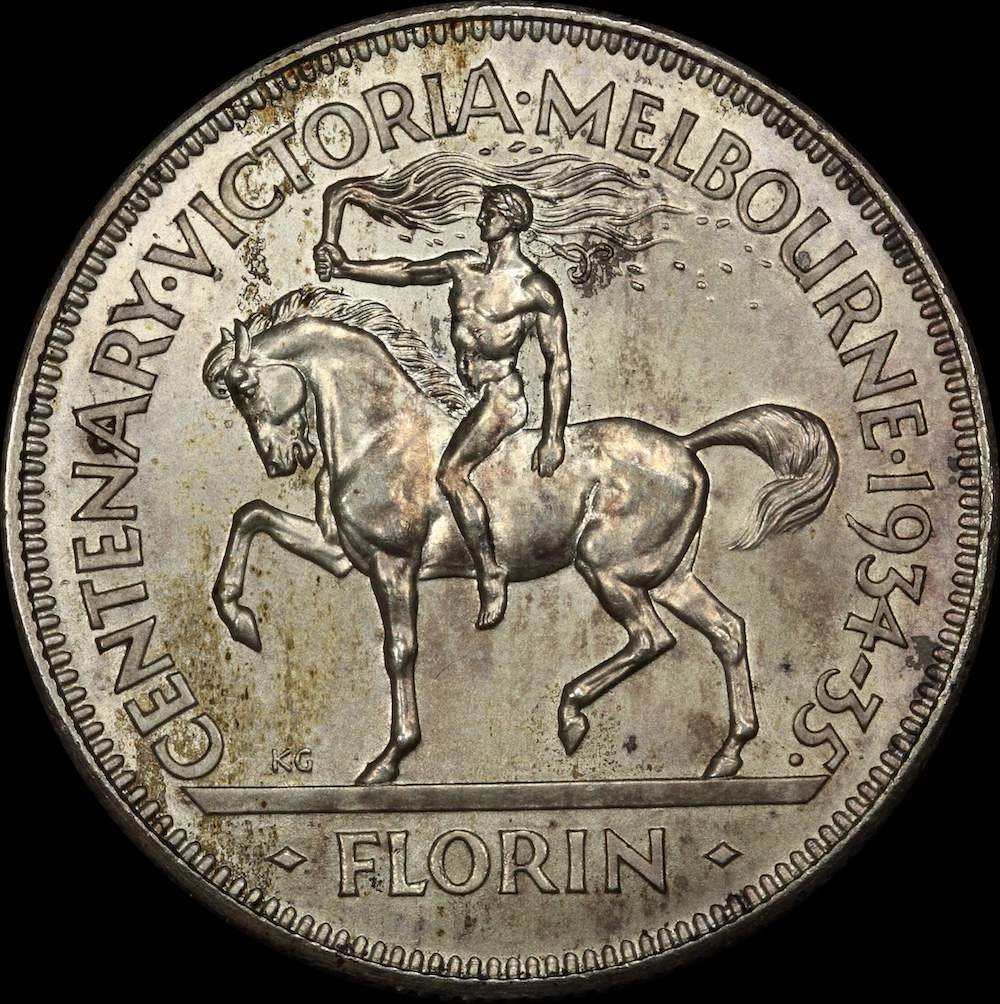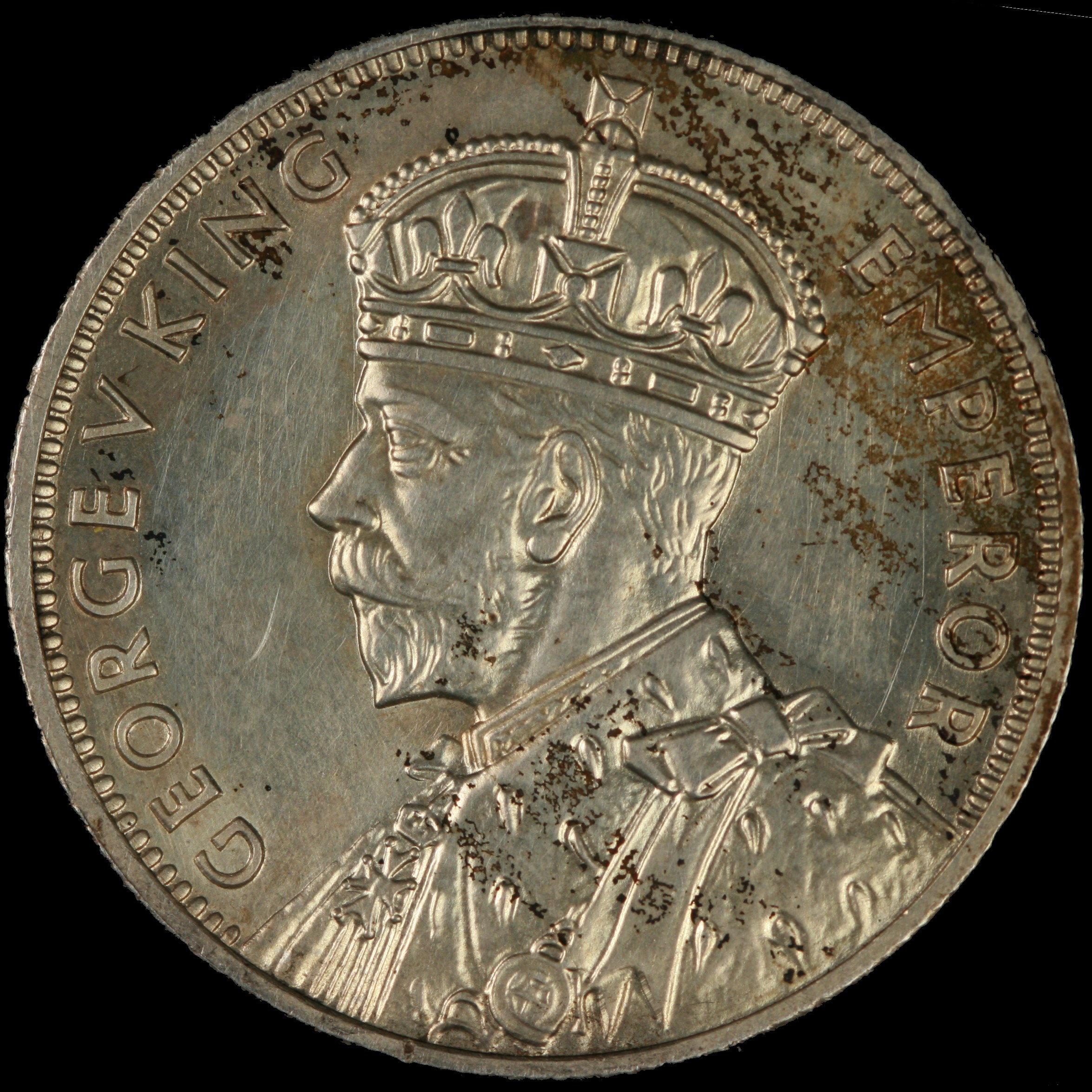Specimen 1934/5 Melbourne Centenary Florin - An Under Appreciated Rarity

The Commonwealth coin market is always active with collectors, no matter how well the economy is doing – you don't need to have great licks of money to enjoy this series, and it costs nothing at all to study it.
The advent of eBay brought in a large number of new collectors into the market for Commonwealth coins, and as always the florin and the penny are the most popular denominations with new collectors. Values of the key date coins in the florin and penny series have risen strongly on the back of this demand, as these collectors continue on with their hobby, this demand is filtering across into other dates and denominations.
The Melbourne Centenary florin has also increased in popularity in a big way – despite the fact it has a mintage that's pretty small relative to other dates in the KGV florin series, the value of this coin has pretty much languished relative to other important Commonwealth coins until recently.
I'm pleased that in the eyes of some the article that I wrote on the historical background to this coin (published last year in the Australasian CAB Magazine), as well as one by Vince Verheyen published shortly after that on the technical aspects of the coin has contributed to collector demand for the coin. Vince's article pointed out a range of technical characteristics that can be used to identify the different types of coin – Specimen; Proof (Type I); Proof (Type II) and Circulation.
Now that discerning collectors are paying ever increasing prices for the examples that were sold for use as circulation coins, attention has turned to the coins that were not struck for circulation, the archival and presentation
coins that were presumably struck prior to the circulation production run.
Vince's research is ground-breaking in many ways, as it is the first in-depth analysis of the technical aspects of the coin that I've seen published anywhere. The fact that auction records indicate that prices for the various different types of “special strike” coins (Specimen; Proof Type I and Proof Type II) have been quite volatile over the years indicates that this knowledge has not been widely known.
In fact, the earliest written reference I can find to a specimen strike of this coin is in an auction catalogue dated 1982, and even this coin was not listed among the Pre-1955 Specimen, Pattern & Proof Coins, it was listed among the circulation florins. The earliest reference to a Specimen 1934/5 Melbourne Centenary Florin that is listed within the Pre-1955 Specimen, Pattern & Proof Coins is in an auction catalogue dated 1996! This is some 61 years after the coin was actually struck!
It would be naïve to think that these coins weren't traded prior to these dates, it beggars belief that they weren't, it would be more of a case that the coins were not identified by the vendors, auctioneers or buyers, and were regarded merely as more attractive examples of the circulation strikes. Right from the 1970's onwards, there are numerous auction listings of Melbourne Centenary florins where the description makes reference to characteristics such as “proof-like fields” and “wreath fully struck up”, all such coins are listed among the circulation florins. As the level of detail in the rider's wreath is a key characteristic in grading circulation examples of the Centenary florin, any references to it being well struck or complete do not necessarily indicate that the coin was a non-circulation strike.
Little Numismatic Research Published On The Melbourne Centenary Florin
Research through the journals issued by numismatic societies such as the NAA, NAV and SANS does not yield any research on the Melbourne Centenary florin at all, let alone the non circulation strikes. It is also important to note that the first commercial catalogues covering the values of Australian coins were not issued until the mid 1960's, and that there was not even a cursory listing of pre-1955 proof, pattern & specimen coins in the Rennik's “Australian Coin & Banknote Guide” until 1964.
Where collectors are not able to satisfy that a description in an auction catalogue is correct, they will either not bid at all or will build a risk factor into their bid, this can cause a coin to make a lower than expected price.
Conversely, where educated collectors are able to satisfy themselves that a particular coin is actually more valuable than the catalogue description represents, they will have no hesitation bidding the coin up to a level that they believe the coin is worth, and this is where a coin will make a much higher than expected price.
My research into auction results for the Melbourne Centenary florin over the past few decades clearly shows this has occurred. Some coins have sold for significantly more than their estimate (which would indicate that the buyer determined the coin was a different type to that which was attributed by the auctioneer), while others were either unsold or sold for significantly less than the estimate – this indicates that the buyers present on the day determined that the coin was not as described.
So how many examples exist, and how frequently do they become available to collectors? My research yields the following numbers of each type of Centenary florin that has turned up at auction in the past 20 years:
| Type | # Seen |
| Specimen | : 5 |
| Proof Die I | : 1 |
| Proof Die II | : 1 |
| Unattributed | : 13 |
The final category includes those coins that have made a price which indicates that the coin was of a different type to that attributed to it by the auctioneer, but where I do not have direct knowledge of what the die type was. Correspondence with numismatists that attended those sales and viewed the coins will yield more information on the die types of the as yet unattributed coins, however this may not be definitive.
What is known is that the two record coins retained by the Melbourne Mint, and now housed at the Museum of Victoria, were both struck by the specimen dies. This indicates that despite it being the standard practice for Royal Mint branch staff to strike proof coins for record or presentation purposes, it was the specimen strikes of the 1934/5 Melbourne Centenary florin that filled that important role.
When we compare the rarity of each type of this coin then with other specimen & proof coins of the same period, we can see that all of the non-circulation strikes of the Melbourne Centenary florin offer excellent value for money at present:
| Coin | Current Cat. Value | Rarity |
| Proof 1937 Crown | $60,000 | 31 at auction since 1995, 13 in FDC condition |
| Proof 1927 Canberra Florin | $60,000 | 44 at auction since 1995, 26 in FDC condition |
| Proof 1934/5 Centenary Florin (Both types) | $7,500 | 2 positively identified at auction since 1995 |
| Specimen 1934/5 Centenary Florin | $40,000 | 5 positively identified at auction since 1995 |
These figures indicate to me that the potential for further capital growth of the non-circulation strikes of the Melbourne Centenary Florin is quite strong – these coins will need to appreciate significantly before they reach the same price levels that items of comparable rarity are currently commanding.
Indeed, since the non-circulation 1934/5 Centenary florins are rarer as a type than a number of the items listed above, it has the potential to appreciate even further. (A proof 1937 Crown commands $60,000 in FDC condition currently, yet seven have been seen at auction. In addition, another 5 proof 1938 crowns in FDC condition have been sighted over the same period.)
If you have funds that you are interested in allocating to a top quality item in the Australian rare coin market, in my opinion you simply can't go past this coin. Don't hesitate to email or telephone your interest – as we've seen from the above auction figures, since if past experience is any guide, a comparable example won't be on the market for some time.
